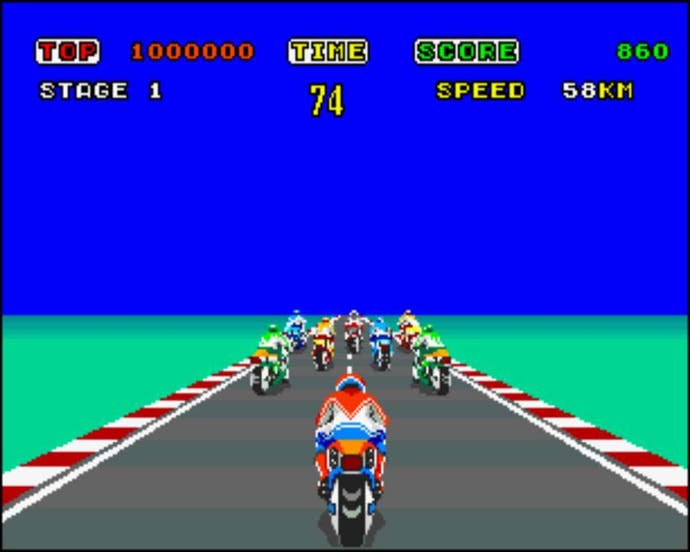Hang-On
Motorbikes!
They say there's nothing better than having something throbbing and powerful between your legs and by creating 1985's seminal Hang-On arcade game it's clear Sega took this idea quite literally.
Beckoning the player to sit astride a plastic replica of a super-powerful motorbike, Hang-On (along with other Sega produced arcade hits After Burner and Space Harrier) confidently heralded a new, decadent age of arcade gaming: dedicated cabinets.
No longer was the player expected to simply stare at a non-descript screen and manipulate familiar joysticks and buttons The cabinet was inexorably linked with the game, even going as far as to offer force-feedback which correlated directly with on-screen bumps, prangs and crashes.

Turning is achieved by tilting the bike from side to side, and while it can't be described as an authentic riding experience, it certainly makes contemporary titles such as Namco's Pole Position look positively archaic in comparison. The visuals are mightily impressive given the time of production, with large and colourful sprites hurtling down smoothly scrolling tracks as perfectly scaled roadside scenery zooms past. Sega's rapidly-evolving arcade hardware was only beginning to flex its 2D muscles, but Hang On was undeniably impressive - even by today's lofty standards.

